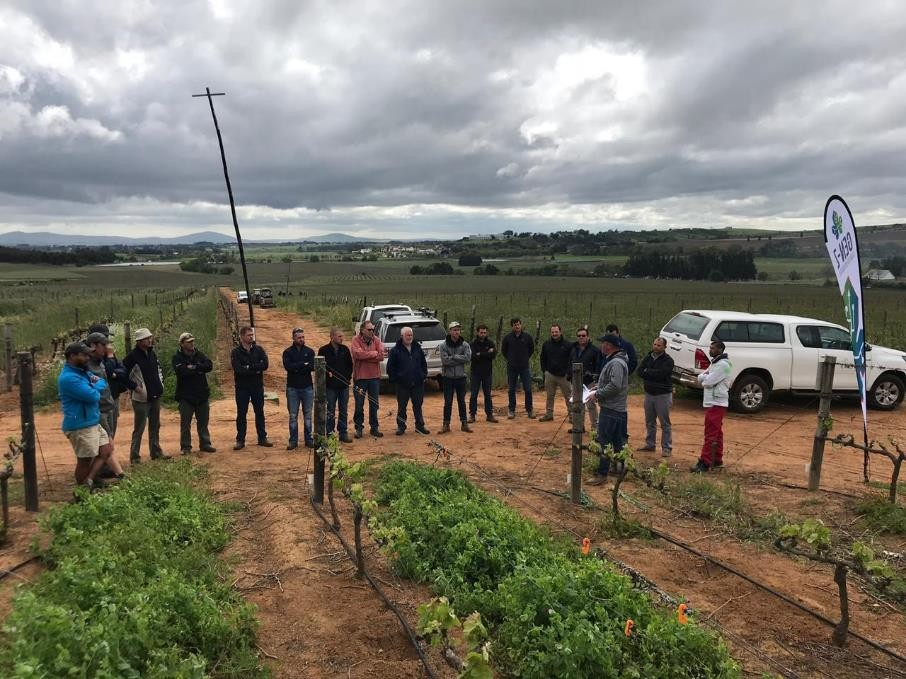As part of the Gen Z: Vineyard Project, 16 cover crop demo’s were established in vineyards throughout the Western Cape in 2017 and 2018. Agronomists from two seed suppliers, Agricol and Barenbrug, provided cover crop recommendations in terms of species and mixes suited to the different regions and soil types, as well as assistance in the evaluation of each treatment. The seed was donated by Agricol and Barenbrug and ‘farmer days’ were held at selected sites.
Photo 1. Cover crop demo at De Wetshof Landgoed, Robertson.
Photo 2: ‘Farmer day’ held at Kanonkop, Stellenbosch.
In 2017, cover crop growth at most of the demo sites was poor due to the drought conditions. In 2018 however, rain following the harvest period and during the winter months resulted in generally very good cover crop performance across all the sites. During the ‘farmer days’ producers had the opportunity to visit a few of the demo sites, where Agricol, Barenbrug and Vinpro facilitated discussion around the performance of the selected cover crops and mixes, as well as recommendations made. A few of the most notable observations made at selected sites can be found below:
Included in the list of recommended cover crops/mixes were a few new cover crops and cultivars which were established in vineyards for the first time:
Cereal mixtures eg. Triticale/Barley and Vetch (photo 3) performed well at all sites, providing excellent weed suppression and biomass. The cereals included in the mixtures are determined by soil type.
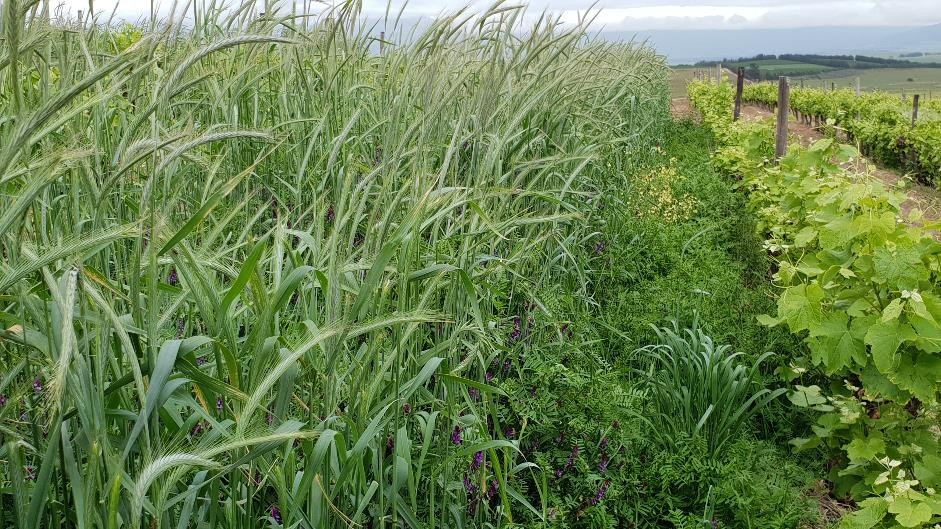
- Forage Barley (Voergars)– good, fast growth early in the season and of the cereals that were established on their own, it displayed the best growth.
Seeding density: 35-40 kg/ha - Forage Rye (Voerrog)– worked especially well in a mixture with vetch. Provides a
more cost effective, sometimes better, alternative to Triticale (Korog).
Seeding density: 35-40 kg/ha - Phacelia– a promising, new cover crop, showed strong growth and produced a large amount of material. It is also a very good bee forage and is considered drought tolerant. It will be further evaluated in the following year’s demo plots.
Seeding density: 35 kg/ha
Photo 3: Forage rye/vetch mixture showing excellent biomass production at Frederick le Roux,
Hermon.
Black/Saia Oats (Swarthawer), another cereal, performed very well by providing ample material and effective weed suppression.
Under the prevailing conditions, the clovers did not fare particularly well and due to their late growth, were overgrown by weeds. Better results could be seen when cultivated on the grapevine row (bankie) instead of the work row.
The White Mustard (photo 4) delivered excellent results. It produced a lot of material and provided very good weed suppression. This variety also performed very well under the drought conditions of the previous year.
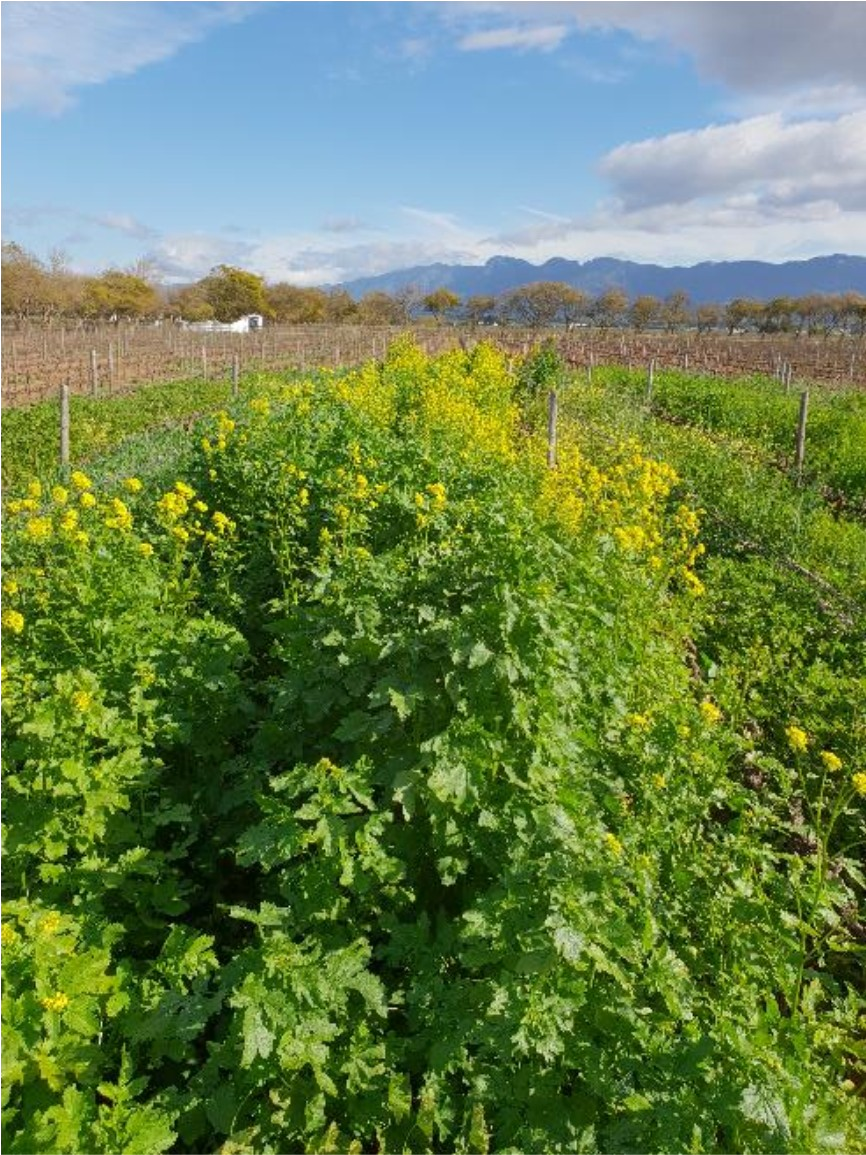
Soil type also played a major role in cover crop performance at the demos. In the Wellington area, lupins outperformed vetch on the weathered granite soils whereas the vetch grew very well on the weathered shale soils, and together with forage rye produced very good material. Additional factors to consider are soil pH, stone fraction, water availability.
Sewing date also contributed the success of the cover crops. Where the sewing was carried out in mid-late May, growth was poorer in comparison to where cover crops were sewn in April.
In the Olifantsrivier region, where cover crops (barley, triticale and white mustard) were sewn just before the rain in May, there was greater biomass and weed suppression than where they were sewn later in May.
Fertilizer application of 100 kg KAN/ha at the 4-6 leaf stage had a significant effect on the biomass and in some cases doubled material production in comparison to the treatments where no fertilizer was added.
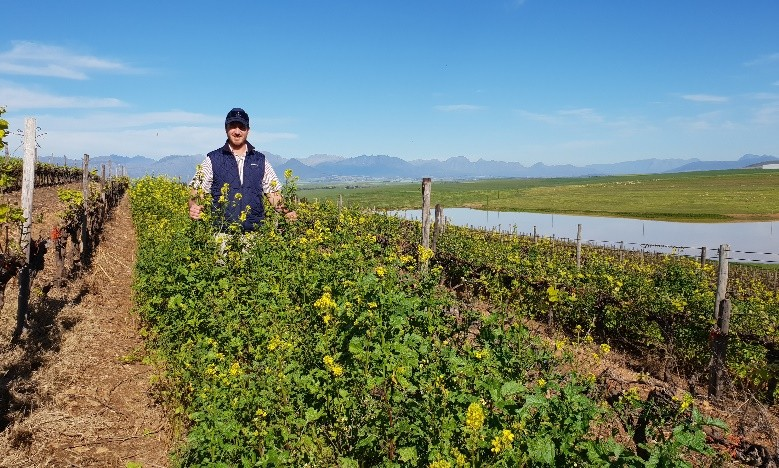
Two weeds, namely small mallow (kiesieblaar) and rye grass (ryegrass), provided the greatest competition for cover crops in the various demo sites. Growth of these weeds can be inhibited through the selection of cover crop species or mixes that offer greater weed suppression.
Given the low rainfall in the Olifantsrivier region, establishment cover crops on the grapevine row where winter irrigation is possible, appears to be a more successful practice than sewing cover crops in the work row. Improved infiltration, decreased compaction and good weed suppression were visually observed where this practice was applied in Koekenap and Vredendal, Olifantsrivier. (For more information on the planter used in this trial contact Stoney Landbou Dienste: stoney@breede.co.za).
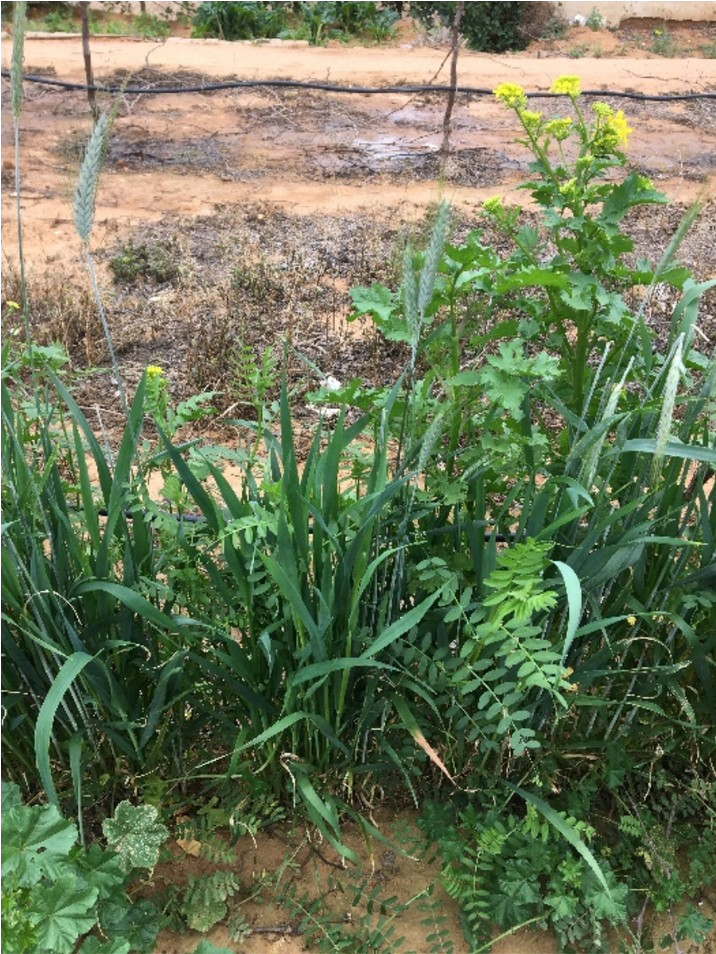
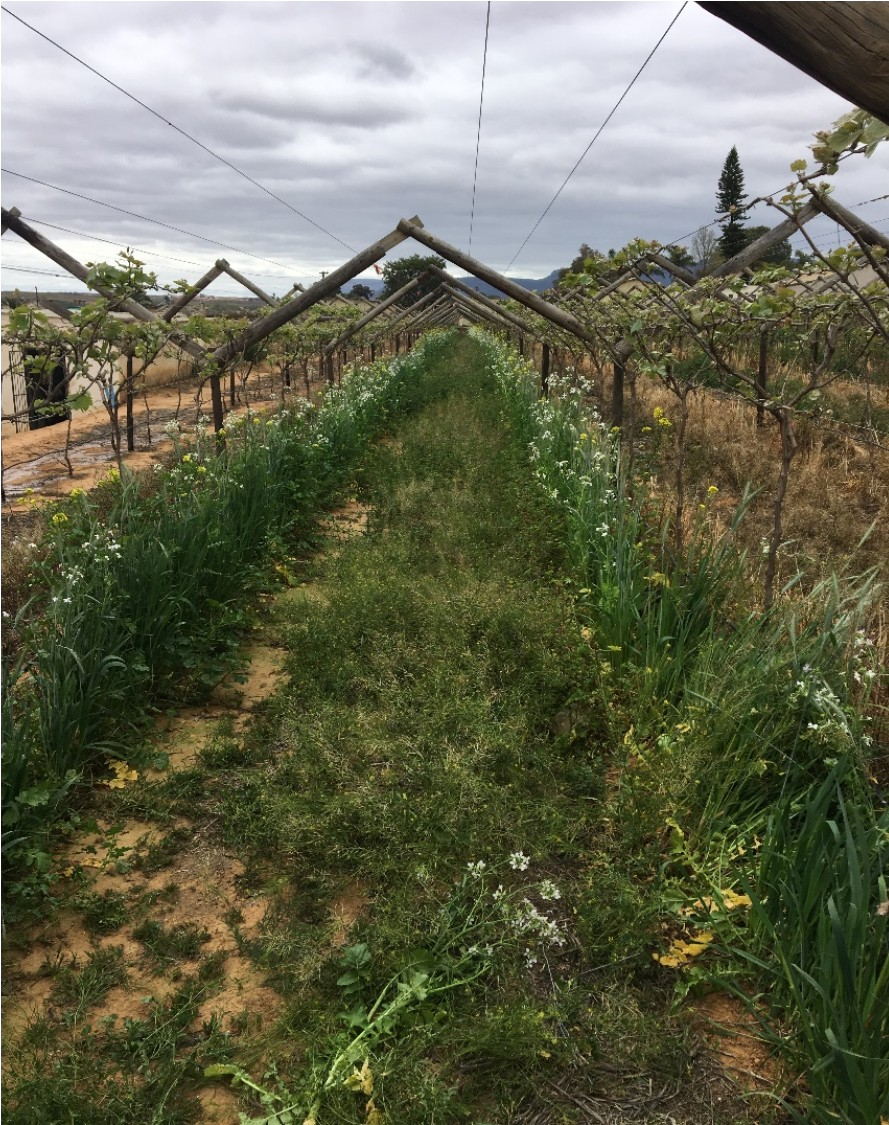
Thank you to:
Agricol (Christof Muller) and Barenbrug (Jaco Kellerman and Ivan Jansen van Rensburg) for the seed donations, advice, time and involvement in the farmer days.

